River rock gardens can be a great way to add texture and interest to your outdoor space. Not only are they beautiful, but they also require minimal maintenance. By adding river rocks of different sizes and colors, you can create an eye-catching display that will last for years to come. Plus, river rocks come in a variety of shapes and sizes, so you can easily find the perfect match for your outdoor area.
In this article, we’ll answer some of the most frequently asked questions about river rock gardens and offer some helpful tips to get you started creating one in your own backyard. Let’s dive in!
Stone Path
Stone paths are often used in river rock garden ideas to provide a smooth and aesthetically pleasing walkway. The stones should be laid down in a pattern that is visually appealing, such as following the contours of the land or creating an orderly grid. To ensure stability and prevent slipping, you can use larger rocks for the edges and fill in the middle with smaller stones.
When you select your river rocks, it is important to ensure they are non-porous to avoid water pooling on top. Also, make sure that the stones are wide enough apart so that soil and grass don’t grow between them, which will create an uneven surface. [1]
Gravel Patio
Gravel patios are an attractive, low-maintenance option for outdoor spaces. It’s perfect for river rock gardens because it can be easily shaped and molded to fit the design you have in mind. The gravel also helps add texture and contrast to the garden, providing a unique look that is sure to draw attention. To install a gravel patio, you’ll need to prepare the ground by removing any existing vegetation and leveling it out. Once this is done, lay down several layers of landscape fabric to help prevent weeds from growing through the gravel. Finally, pour in your river rock and spread it evenly across the patio. You can use a rake or shovel to even out the surface before compacting it with a tamper. [1]
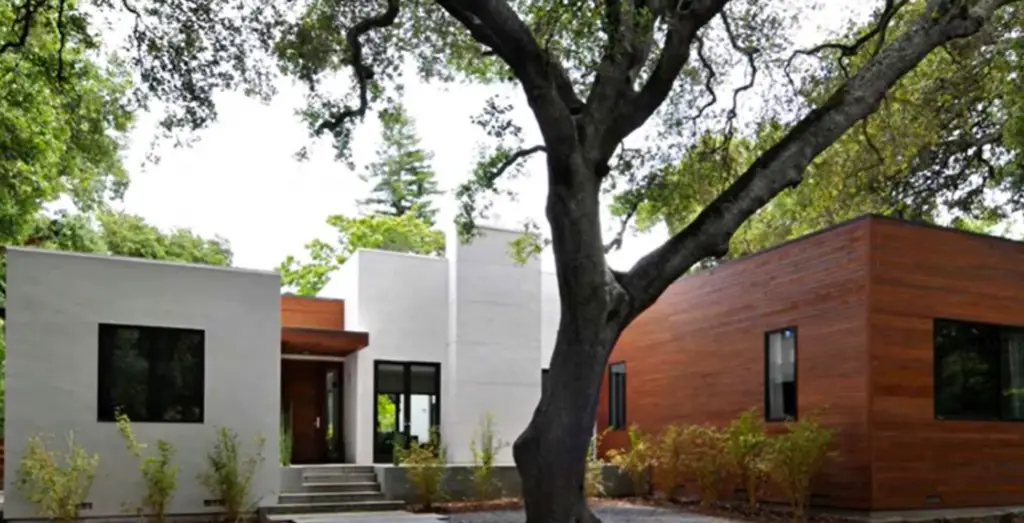
Create a Dry River Bed
Creating a dry river bed is one of the most popular and attractive ways to use river rocks in your garden. It can be used to create a unique feature that can be enjoyed year-round, and it’s relatively easy to install.
A dry river bed is a great way to add texture and contrast to your landscape, especially when contrasted with the color and texture of your other plants. To create a dry river bed, start by digging a shallow trench along the path that you want it to take. Then add several layers of larger rocks on one end, gradually decreasing in size as you reach the opposite end. [1]
Gravel Fire Pit Area
Gravel fire pit areas are a great way to liven up any river rock garden. They provide visual interest and can be the perfect spot for gatherings with family and friends. But before you start building your firepit, make sure that it’s in an area that’s safe and far away from anything flammable like trees or shrubs.
Another important thing to consider when choosing gravel for your firepit area is drainage. Make sure that the gravel you choose has some sort of drainage system so that it won’t become a water-filled mud pit during rainstorms. This will also help keep the fire from spreading to other parts of your garden. [1]
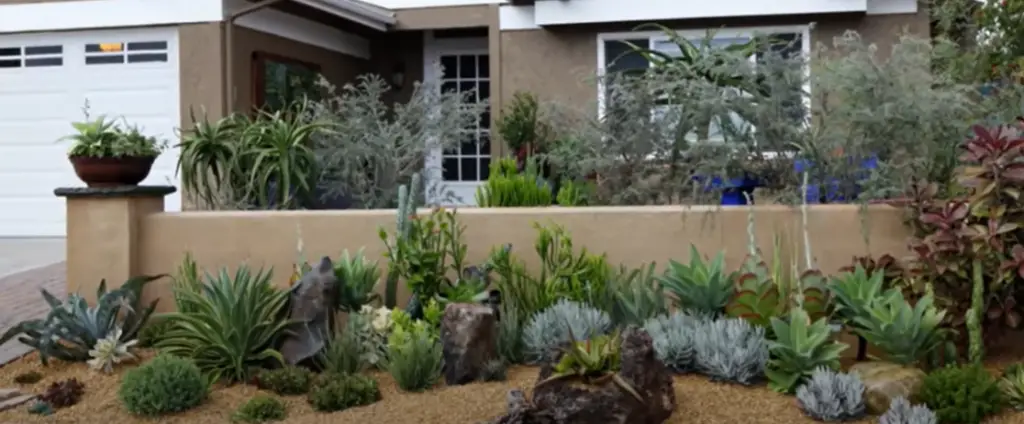
Gravel Patio and Container Garden
Gravel patios and container gardens are two of the most popular ways to incorporate river rocks into your garden. Gravel patios provide a natural, low-maintenance solution to outdoor entertaining, while container gardens offer a creative way to bring plants and flowers in all shapes and sizes into even the smallest spaces.
A gravel patio is a great way to add style and comfort to your backyard. Start by selecting an area of your yard that is flat and has good drainage, as well as access to a water source. Then, lay down a layer of landscape fabric to help prevent weeds from growing up through the gravel. After that, you can spread several inches of gravel over the area, and then add river rocks to create a decorative pattern. Finally, finish it all off with some comfortable outdoor furniture for a great place to relax outside.
For those with limited space or difficulty digging up their yard, container gardens are also an excellent option. All you need to do is find some large containers (or any size, depending on the space you have) and fill them with a potting mix. Then add your favorite plants, along with some river rocks for decoration. You can also use different colors of river rock to provide a unique look for each container or combine multiple colors together for an even more creative design. With a little bit of creativity, you can create an outdoor oasis with just a few pots and some river rocks. [1]
Easy Path Construction
Create an inviting path by laying river rocks in a winding pattern. To construct a basic path, mark out the desired path with garden stakes and mow a shallow trench along the marked line. Then fill the trench with 3″ of soil or landscape fabric, then cover it with 1-2″ of medium-sized river rocks. This low-maintenance path will provide a pleasant walkway and can easily be adjusted or moved if needed. [1]
Colorful Choices
River rock gardens offer a vibrant display of colors to give your outdoor living space just the right amount of charm. Whether you’re looking for a bright pop of color or more subtle earthy tones, river rocks come in almost every hue imaginable. From rustic browns and reds to soft grays and blues, you can choose from dozens of colors to create a unique and eye-catching feature. Plus, these stones come in various sizes, shapes, and textures that blend together beautifully for an extra special look.
Finally, if you’re looking for something even more dramatic, add in some accents like glass marbles or shiny tiles for an extra sparkle and shine. These unique elements can really bring your rock garden to life and make it a truly one-of-a-kind masterpiece. [1]

Pea Gravel Driveway and Entry
If you have an area in your garden that is frequently traveled, and could use a facelift, consider using pea gravel to create a beautiful and durable driveway or entryway. Pea gravel is a very affordable option when compared to asphalt or concrete, with similar durability and aesthetic value. Plus, it’s easy to install yourself! [1]
Rock Garden with Creeping Groundcovers
A rock garden with creeping groundcovers can offer an especially dramatic effect. This type of design helps to showcase the rocks and make them really stand out. As a bonus, the plants growing between the stones will help keep moisture in the soil, reducing water needs for any other plants growing nearby.
When creating a wall or mound of rocks, be sure to use a variety of sizes and shapes for interesting texture. Look for stones that have both flat surfaces and jagged edges. To create contrast, choose one or two colors as the main color scheme in your rock garden design. [1]
Simple Weed-free Flower Beds
River rock gardens don’t have to be complicated. In fact, sometimes the simpler the design, the better. One of the simplest designs is a weed-free flower bed. To create this type of garden, simply line your desired area with plastic sheeting before adding your river rocks and flowers. This will prevent weeds from taking root, while still allowing your garden to look and feel like an outdoor oasis. To give the flower bed a finished look, you can use larger river rocks to edge it or fill in any gaps. [1]
An Unobtrusive Landscape
River rock gardens provide a subtle and unobtrusive landscape feature. Unlike more complex garden designs, the use of river rocks can create an atmosphere of tranquility and relaxation. River rocks are a popular choice for landscaping because they are natural-looking, inexpensive, and easy to maintain. [1]

Water Feature
Water features can really stand out in a river rock garden. A small fountain or waterfall, for example, can create a relaxing and pleasant atmosphere while being easy to install and maintain. You might even consider combining elements of water with fire—a fire pit surrounded by smooth stones framed by a low wall of rocks could be the centerpiece of your outdoor living space. If you really want to get creative with your river rock garden, consider adding a stream or pond. A carefully designed water feature will bring your landscape design to life and be the envy of all your friends and neighbors.
When it comes to selecting rocks for a water feature, size is key. Smaller stones are better for directing water flow, while larger stones work best to highlight the edges of the feature. You’ll also want to choose only river rocks that are non-porous, as these won’t absorb any of the water and cause damage to your landscape design. For added drama, add some colored river rocks or glass beads for a more exotic look. [1]
Neutral Stone and Color
When it comes to river rock garden ideas, neutral stone and color are essential. Neutral stone types such as granite, slate, quartzite, or basalt tend to be more subtle and blend better with the natural environment. Earthy shades like gray, tan and brown will provide a gentle backdrop for any planting design you may have in mind. The idea is to create a soothing, natural environment that will be easy on the eyes. [1]
Create a Zen Garden
A river rock garden is the perfect place for a zen garden! Zen gardens are meant to inspire peace and tranquility, so choose plants that provide peaceful energy. Consider adding flowering plants like lavender or sage to your design. Additionally, you could include trees, shrubs, and flowering vines around the edge of the garden. Place larger rocks in patterns or in a circle, and fill the gaps with smaller stones. This will create a beautiful contrast between the plants and rocks, creating an inviting atmosphere for relaxation. Add a few chairs or benches for comfortable seating, which can make your zen garden even more tranquil. [1]
Planters
Using river rocks in planters is a great way to bring the feel of nature into your garden. You can accentuate the look by layering different sizes and colors of stones for depth and texture. An ideal setup would be to use river rocks for both edges, along with a layer of pebbles at the bottom to help with drainage. You can also fill planters with small river rocks and plants for an eye-catching display. [1]
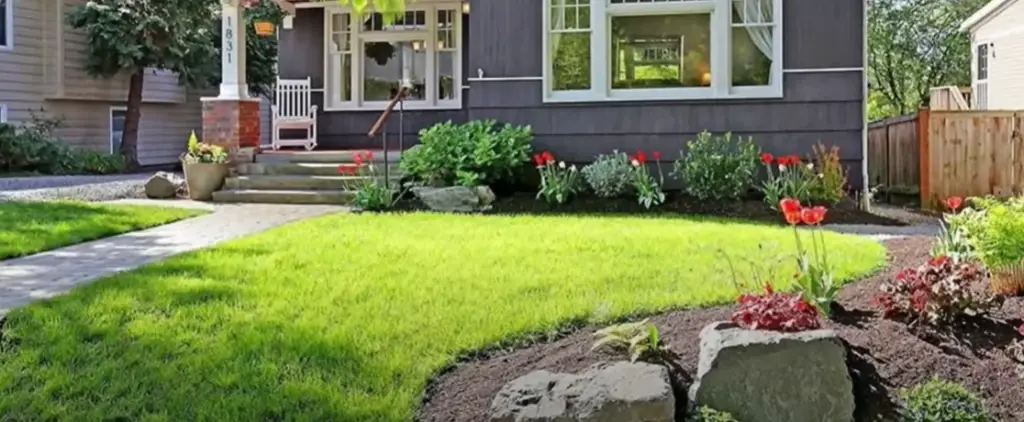
Xeriscape with Gravel
Xeriscape is a great way to conserve water and save money, while still having an amazing looking garden. Gravel makes an excellent choice for xeriscape gardens, as it’s low maintenance and doesn’t require much watering. You can easily add some river rock around the edges of the gravel to give it more definition and make it look even better. To make sure the gravel stays in place, lay down a geotextile fabric first, then spread the river rocks over it for extra stability. Plus, if you add some colorful flowers or other plants between the rocks, your garden will have a unique and interesting look. Just be sure to use plenty of mulch and gravel to really let the river rocks stand out. [1]
Starring: Succulents!
If you’ve decided to try your hand at a river rock garden, you may be interested in incorporating some succulents. Succulents are great for rocky gardens, as they don’t require much soil and can survive dry conditions. Just make sure whatever type of succulent you choose is native to your area, as non-native succulents can be invasive.
When incorporating succulents into your river rock garden, make sure you provide plenty of drainage for them. Rocks can help to keep the soil from becoming soggy, but be sure to test it before adding the plants. [1]
Build a Stone Sculpture
When it comes to adding that extra charm to your garden, building stone sculptures is a great way of doing so. Stone sculpture can take many forms; from the traditional gnome or fairy sitting on the rock, to intricate and abstract shapes. The materials you’ll need are stones, cement and tools like trowels and pneumatic drills.
The first step is to select the right stones for your sculpture; you need to consider size, weight and shape. Once you have your materials ready, begin by creating a base or foundation of rocks on which the sculpture will stand. You can use concrete or mortar to secure the stones in place and make sure they’re firmly attached. After the base is complete, you’ll begin to build the sculpture itself.
To create the shape of your creation, focus on using large stones as the backbone or main body of the structure and then add smaller rocks for details. Use a trowel and mortar to fill in any gaps between rocks and around edges for stability. For even more stability, use pneumatic drills to make holes in the stones and then insert rods or dowels as a structural support. [1]

Comfy, Warm Pet Bed
If you are looking for a great way to add some warmth and comfort to your pet’s home, then creating a comfy bed out of river rocks is the perfect solution. River rocks have long been used as natural heating elements in pet beds, as they have amazing heat-retaining properties that keep pets cozy on cold nights. To create a comfy pet bed with river rocks, you’ll need a few supplies. Begin by finding an area in your yard or garden that has some flat stones and a shallow pit of river rocks. You can even create a makeshift bed out of cardboard boxes for smaller pets.
Once you’ve constructed the frame for your pet’s bed, fill it up with river rocks. The stones should form a nest-like shape, providing plenty of cushion and support for your pet. Make sure the rocks are smooth and not too sharp so they don’t harm your pet’s skin or fur. Once you’ve filled the bed with enough stones, place a blanket on top to provide extra warmth and comfort. [1]
Combine River Rocks and Clumping Grasses
Combining river rocks and clumping grasses is one of the best ways to create a unique, eye-catching garden. Clumping grasses come in a variety of shapes, sizes, and colors, adding texture and movement to your landscape. They can also thrive in various soil types and conditions, making them a great choice for any garden. River rocks, on the other hand, can add a touch of color and texture to your garden without taking up too much space. By combining the two elements together, you’ll be able to create a unique and beautiful outdoor space that is sure to draw attention from visitors. [1]
Create a Round Bed for Yucca
If you’re looking to create a more unique and visually appealing garden, consider using river rocks to create a round bed for your Yucca plant. To start, determine the size of the circle that you are going to build. You will also need some large flat stones or pavers for the border as well as small pieces of gravel for the top layer. Once you have all the materials ready, it is time to start constructing your bed.
Start by using a garden hose or rope to draw out the shape of your circle, then use a spade or shovel to dig out the soil to create a shallow trench around it. Place flat stones inside of this trench and then start adding the river rocks, building up the sides and creating a bowl shape. You can then layer in some gravel to create a nice textured look for your bed before planting your Yucca plant. [1]
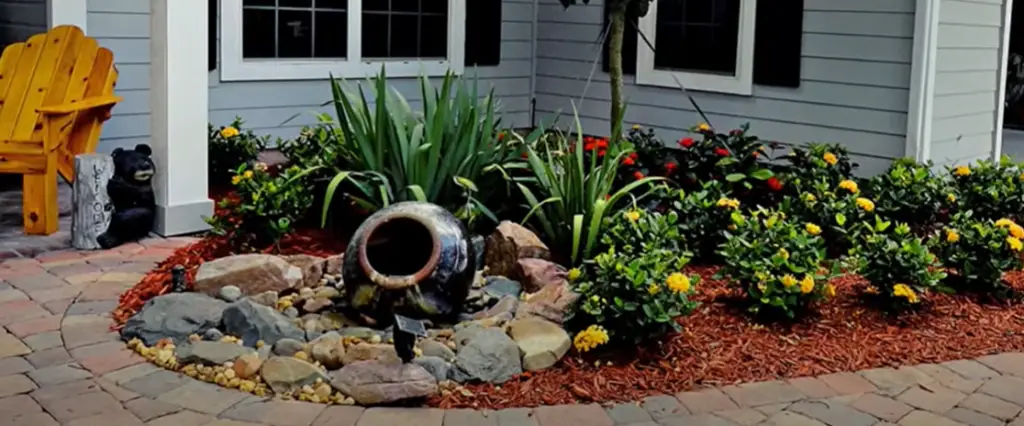
Stone Planters on Stone Beds
For an elegant and natural-looking garden, stone planters atop a stone bed can be the perfect inspiration. This allows for easy access to river rocks of different sizes, colors and shapes that can be used for decoration in the garden. Planting stones on top of the bed creates an interesting feature in the landscape, while also giving you more control over the placement of your river rocks.
To make a stone bed, start by digging out an area in the ground that is slightly larger than the size of the planter you want to use. Place gravel into the bottom of the hole and then add soil on top of it until it covers all but a few inches of gravel. [1]
Pebble Pots
Pebble pots are one of the most popular river rock garden ideas. These make use of smaller stones to create unique and attractive containers for small plants or succulents. The basic idea is to fill a pot with pebbles, then place your plant in the center of it. To finish off, you can top it with some larger stones to create an interesting effect.
For extra visual appeal, you can take advantage of the various colors and shapes available in river rock varieties. Choose brighter shades such as reds or oranges to draw attention to your pot or softer tones like grays and browns for a more subtle look. You could also arrange the stones into patterns, either abstract or geometric shapes.
Pebble pots are an inexpensive and fun way to add a bit of personality to your garden! And the best part is that they’re easy to maintain – just give them good water once in a while and you’ll be all set! [1]
FAQ
What looks good with river rock?
River rock looks best with other natural elements such as plants, stones and mulch. Adding a few garden accents like bird baths, statuary or gazing globes can also give your river rock garden an eye-catching appeal. It’s important to choose pieces that are the right size for your landscape; too small and they will get lost, too large and they will overpower the effect of the river rocks.
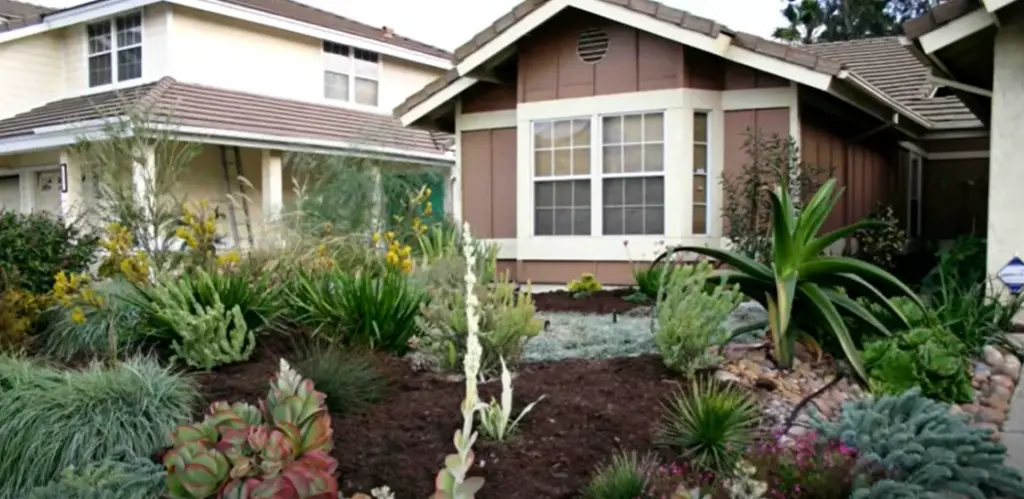
How do you use river rock in a garden?
River rock can be used in a variety of ways to create interesting and unique garden designs. It can be used as pathways, edging for flower beds or as a filler material between plants. You can also use it to create water features such as ponds or waterfalls. For larger gardens, you may want to consider using river rocks as a base or groundcover for mulch and gravel.
What size river rock is best for landscaping?
The size of river rock you need will depend on the type of garden design you are trying to create. For pathways, flower bed edging and groundcover, smaller-sized rocks tend to be best. Whereas for water features or large gardens, larger stones will provide a more dramatic effect. The key is to ensure that the stones are big enough to be visible, but small enough to create an even and consistent layer.
How deep should river rock be?
The depth of your river rock bed will depend on the type of garden design you are creating. Generally, it is recommended to lay stones 3-4 inches deep for pathways and larger stones 4-6 inches deep for groundcover or filler material between plants. If you are using the river rocks as a base in a water feature, they should be laid at least 8 inches deep.
Do I need to put anything under the river rock?
It isn’t necessary to put anything underneath the river rocks, but it is recommended to lay down a layer of landscape fabric beforehand. This will help keep weeds out and also help prevent the stones from sinking into the ground over time. If you are creating a water feature, then you will need to lay down some type of liner such as rubber or plastic to create the necessary seal.
How do you prepare the ground for river rocks?
Before laying your river rocks, it’s important to prepare the ground. Start by clearing away any weeds or roots, then level the area with a rake. You may also want to spread some soil over the surface of the area to provide an even base for your stones. Once this is done, you can lay down landscape fabric and then start laying your river rocks.
What should I lay down before river rock?
Before laying down your river rocks, it’s important to prepare the ground. Start by clearing away any weeds or roots, then level the area with a rake. You may also want to spread some soil over the surface of the area to provide an even base for your stones. Once this is done, you can lay down landscape fabric and then start laying your river rocks.
Will weeds grow through river rock?
It’s possible for weeds to grow through river rocks if the stones are not laid down properly. To prevent this from happening, it’s important to lay down landscape fabric before spreading the river rocks. This will help keep weeds out and also help prevent the stones from sinking into the ground over time.
Useful Video: 42 Best River Rock Landscaping Ideas To Spruce Up Your Garden
Conclusion
River rock gardens offer a wealth of creative ideas and design possibilities that can help you create a beautiful outdoor oasis. Whether you choose to incorporate small stones into an existing garden or create an entire river rock feature, you’ll find that the rewards are well worth the effort! With some careful planning and creativity, your river rock garden will be an attractive and enjoyable part of your backyard.
Remember to start with a plan, choose the right rocks for the job, and prepare your space properly before you begin. With these tips in mind, you can create a stunning river rock garden that will make your outdoor area look even more beautiful for years to come! Good luck!
References:
- https://www.thespruce.com/river-rock-landscaping-ideas-5224679





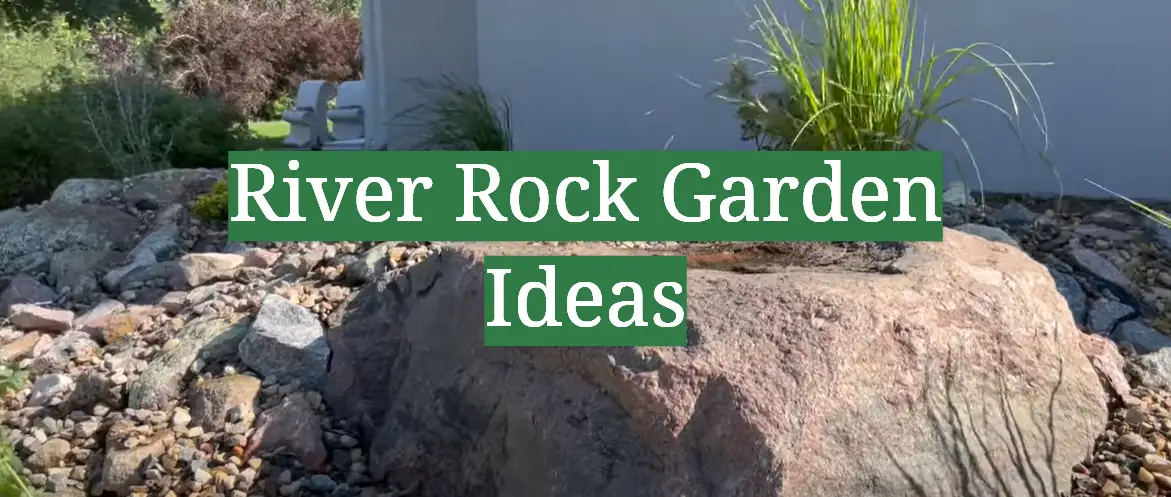




Leave a Reply
View Comments